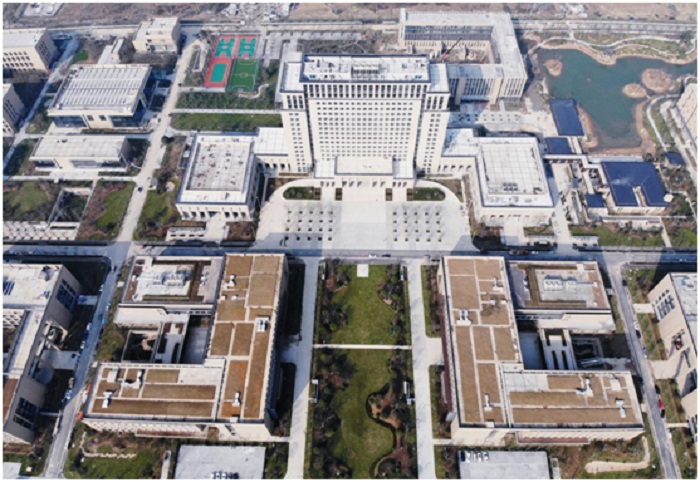



The draft outline of China’s 14th Five-Year Plan (2021-2025), the first five-year period after the country embarked on a new journey toward fully building a modern socialist country, charts the route for China’s development with 20 indicators in five categories covering economic development, innovation, well-being of the people, green development, and security guarantee.
Like the country’s previous five-year plans for national economic and social development, the draft outline of the 14th Five-Year Plan, which was reviewed at the fourth session of the 13th National People’s Congress (NPC), China’s top legislature, places indicators of economic development top on the list.
However, instead of setting specific anticipatory indicators for annual growth in gross domestic product (GDP), the new five-year blueprint says the country will keep GDP growth within an appropriate range and set annual targets in light of actual circumstances.
Such narrative marks the first time that the country describes its economic development targets in its Five-Year Plans with mainly qualitative expression and only implicit quantitative expression, said Hu Zucai, deputy director of China’s National Development and Reform Commission (NDRC) at a press conference held by the country’s State Council Information Office (SCIO) on Monday.
China will formulate and implement a 10-year action plan for basic research, according to the draft outline of the 14th Five-Year Plan, which specifies for the first time the proportion of China’s basic research expenditure in the country’s total spending on research and development (R&D).
Government funding for basic research is expected to account for over 8 percent of China’s total expenditure on R&D by 2025, said Hu, adding that it sends a clear signal that China is going to pay increasing attention to basic research.
Seven of the 20 major indicators of economic and social development in the new five-year plan are directly related to people’s well-being, representing the highest proportion of such indicators in the country’s five-year plans, Hu noted, adding that the seven indicators cover such fields as employment, income, education, healthcare, elderly care, and childcare.
Three of the seven indicators are new ones, namely keeping the surveyed urban unemployment rate under 5.5 percent during the 14th Five-Year Plan period, increasing the number of certified (assistant) doctors to 3.2 per 1,000 population by 2025, and raising the number of nursery school places for infants under three years old to 4.5 per 1,000 population by 2025.
As China is expected to enter a moderately aging society during its 14th Five-Year Plan period, the draft outline of the new five-year plan therefore responded to concerns about relevant problems by stressing the implementation of a national strategy for addressing population aging, according to Hu.
China will make more efforts to develop elderly care services that are accessible for all, build a system that integrates home, communities and healthcare facilities, improve the network of community and home-based services for elderly care, and make public facilities more elderly-friendly, so as to improve its capacity to provide elderly care services and the quality of such services, Hu said, citing the new five-year plan.
According to Hu, the draft outline of the 14th Five-Year Plan includes a special section for safe development, a first in the history of the country’s five-year plans.
Attaching great importance to ensuring both development and security, the country has included two obligatory indicators of overall grain production capacity and overall energy production capacity into the major indicators of economic and social development for the first time in its 14th Five-Year Plan.
China aims to increase its overall grain production capacity to over 650 million tons and its overall energy production capacity to more than 4.6 billion tons of standard coal by 2025, indicates the draft document.
It’s believed that the 20 indicators, which include both continuations of the indicators set out in the country’s previous five-year plans as well as updates and innovations made to suit the times, fit China’s social and economic realities and the country’s development needs in the next five years.


The Executive and members of the.


The Acting Director, FCT Directorate of.


President Bola Ahmed Tinubu has been.



Barely a month after resignation of.


An Abuja based Legal Practitioner, Osuagwu.



Convener of Equitable Remedy, Mrs. Magaret.


Contractors handling the contract for city.


Nigerian government may have concluded plans.


The Diplomatic Correspondents Association of Nigeria.


A rights group, “Follow Me Talk.
Leave a Comment